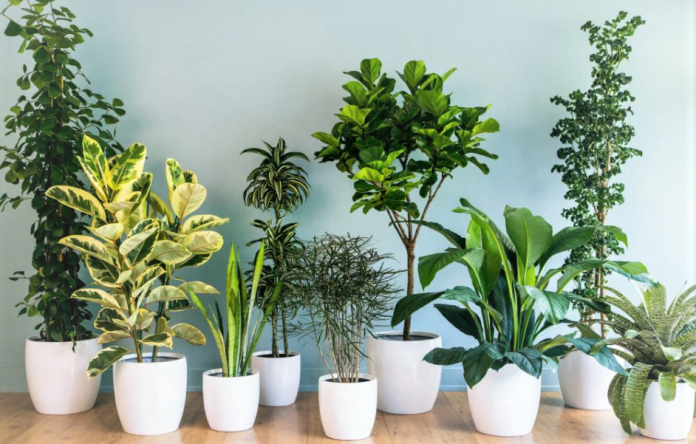Indoor plants can not only increase your room’s decor but also improve air quality, making them a must-have in any indoor space. Some of the best plants to use are those that produce more oxygen than others, so be sure to check out these best highest oxygen producing indoor plants to help you breathe easy and stay healthy no matter where you are!
One of the many benefits of highest oxygen producing indoor plants is that they can help purify the air in your home or office. Plants produce oxygen as a byproduct of photosynthesis, and when their leaves and branches are in contact with the air, they help to disperse the oxygen. Additionally, high oxygen producing plants are often very decorative and can help to brighten up a room.
Boston Fern
Boston Fern indoor plant is one of the most popular oxygen producing indoor plants. This plant requires minimal maintenance and needs more time to grow in size, but will make any home or office space look great. They are especially beautiful when they grow on top of a bookcase or hanging from a basket on the ceiling. This lush green plant prefers bright indirect light and is okay with periods of lower humidity. You can use distilled water or tap water, whichever is available. Keep the soil moist but not wet at all times, this plant doesn’t like it too moist or too dry either.
Bamboo Palm
Bamboo Palm, or Chamaedorea seifrizii, is one of the most effective air-purifying plants. It is a perennial evergreen that can grow up to 10 feet (3 m) tall. This palm has long, slender leaves with a light green color. When kept indoors, it will grow slowly but steadily. It prefers bright, indirect sunlight but can also tolerate low light levels.
This plant is very efficient at removing toxins such as formaldehyde, benzene, and trichloroethylene from the air. It is also known to increase humidity levels, which can be beneficial if you live in a dry climate or if your home has central heating.
Peace Lily
The Peace Lilies are really highest oxygen producing indoor plants for improving the air quality of your home. There are many different varieties, but all provide copious amounts of oxygen as well as absorb other harmful compounds in the home. The white flower will turn green when it needs more water. They can grow up to two feet in height and they need six hours of sunlight or else they will start to droop and lose color. One thing to be aware of with this particular plant is that its leaves can be toxic if eaten so make sure there’s no access for pets or kids when potting them.
Weeping Fig
The Weeping Fig, also known as the Benjamin Fig, is an excellent indoor plant for improving air quality. As it grows, it produces more and more oxygen, making it perfect for bedrooms and living rooms. It is also one of the best plants for filtering out harmful chemicals from the air, such as formaldehyde and benzene.
Rubber Plant
Ficus robusta, commonly known as the rubber tree or rubber plant, is a widely grown species of ficus. The rubber tree grows happily in any potting mix and does especially well in those that contain a large percentage of organic matter. They like to be kept on the drier side, so allow the top inch or so of soil to dry out before watering again. These plants can grow quite large indoors, eventually reaching heights of 6-8 feet. With its glossy, oval leaves and upright habit, the rubber tree makes a handsome addition to any room.
Also Read: Benefits Of Slow-growing Plants
Snake Plant
The snake plant, also known as mother-in-law’s tongue or viper’s bowstring hemp, is a succulent with sword-shaped leaves. These leaves are dark green with light green or white stripes running the length of them. Snake plants are extremely easy to grow and care for, which makes them a popular choice for indoor gardening. They are also one of the most efficient oxygen producers in the world.
One of the benefits of snake plants is that they produce oxygen at night, making them a great plant to have in your bedroom. They also remove carbon dioxide and other toxins from the air, making them a natural air purifier. If you’re looking for an easy-to-care-for plant that will help improve the quality of your indoor air, add a snake plant to your home.
Lady Palm
The lady palm or rock palm (also called the lady tree), is a very beautiful, low-maintenance houseplant. That has leaves that can grow up to three feet long. The female specimens have long, smooth shafts with heavy heads, while males have drooping shafts and shorter clusters of flowers. This plant emits much more oxygen at night than during the day because it’s a CAM plant. When you’re looking for an air purifying plant, this one is a great pick.
This tropical plant from India and Southeast Asia does well when located near heaters. And lights as its natural habitat consist of forests with bright sunlight year-round.
Dracaena Marginata (Corn Plant)
The corn Plant, Dracaena Marginata, is known for its distinctive mid-stripe which can range in color from a pinkish red to pale green. The leaves are long and green with wavy edges. The plant can grow up to 10 feet in height indoors but does not do well in direct sunlight. It’s a low-maintenance plant and only needs watering about once a week. These plants have been known to clean the air of pollutants such as formaldehyde, xylene, benzene, ammonia, and trichloroethylene according! This makes them great additions near areas where you smoke or use chemicals.
Chlorophytum Comosum (Spider Plant)
Spider Plant, also known as a Chlorophytum Comosum, has long been known for its ability to purify the air indoors. Research from NASA and other institutions has confirmed that Spider Plants create enough oxygen for two people in an average size living room. For new Spider Plants, potting soil with plenty of organic material. Like compost or rotted manure is essential for optimum growth and development. Soil that is too wet or dry can kill the plant and cause it to stop generating oxygen altogether. A small rectangular pot will do in most cases.
Is it bad to sleep with plants in your room?
Many people have strong opinions on whether or not it is okay for people to sleep with plants in their bedrooms. A common argument against this practice is that some people may develop allergies. From the pollen that may be shed from the leaves. If this does happen, it’s best for someone who is allergic, such as yourself. Place their bedroom away from where most of their flowers are placed. Some individuals say that sleeping near a plant helps them have better sleep and rest more peacefully. Because they can feel what the plant needs and its connection.
Conclusion
Looking for ways to combat bad indoor air quality? Indoor plants have been shown time and time again to significantly decrease the levels of volatile organic compounds in a room, which may help you breathe better. Using an app like Grower shows you how different varieties. React to light and temperature so that you can find the best options for your needs.












